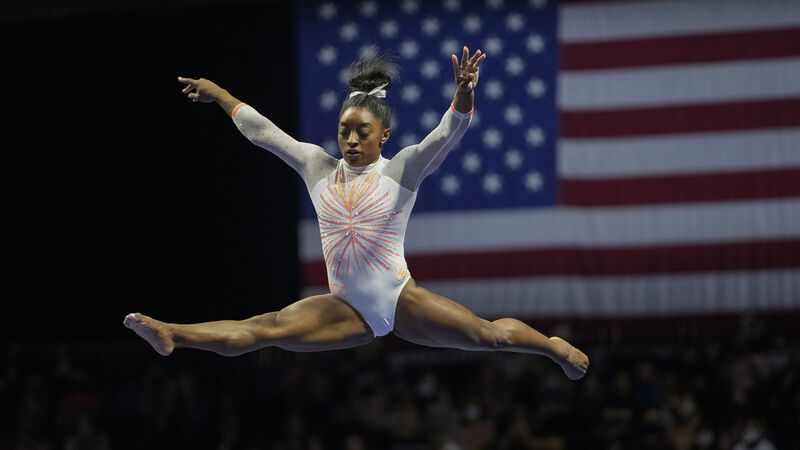Eimear Ryan: Should we really curb the natural advantages of the sporting outliers?

Is disapproval of Simone Biles' audacious routine further evidence of the infantilising of women's sport? asks Eimear Ryan. Picture: AP Photo/AJ Mast
You may have seen the video on social media during the week — all seven jaw-dropping seconds of it. Simone Biles, the 24-year-old American widely regarded as one of the greatest ever gymnasts, sprints into frame, does a roundoff and a back handspring onto the vault, then launches herself into a double-back pike somersault. Such is her velocity she doesn’t quite stick the landing, jumping back a little after her feet hit the ground. "Wow," says one commentator. "Unbelievable," says the other.
At the US Classic last Saturday, Biles performed a vault that has never been seen before in competitive women’s gymnastics: a Yurchenko double pike. Named after Soviet gymnast Natalia Yurchenko, who pioneered the roundoff/back handspring entry style, the vault’s exit is normally less ambitious: a front tuck somersault with a half twist, perhaps. Called "a stunning feat of power, physics and fearlessness" in , the Yurchenko double pike has been occasionally witnessed in men’s gymnastics, but never women’s; not until Biles.









